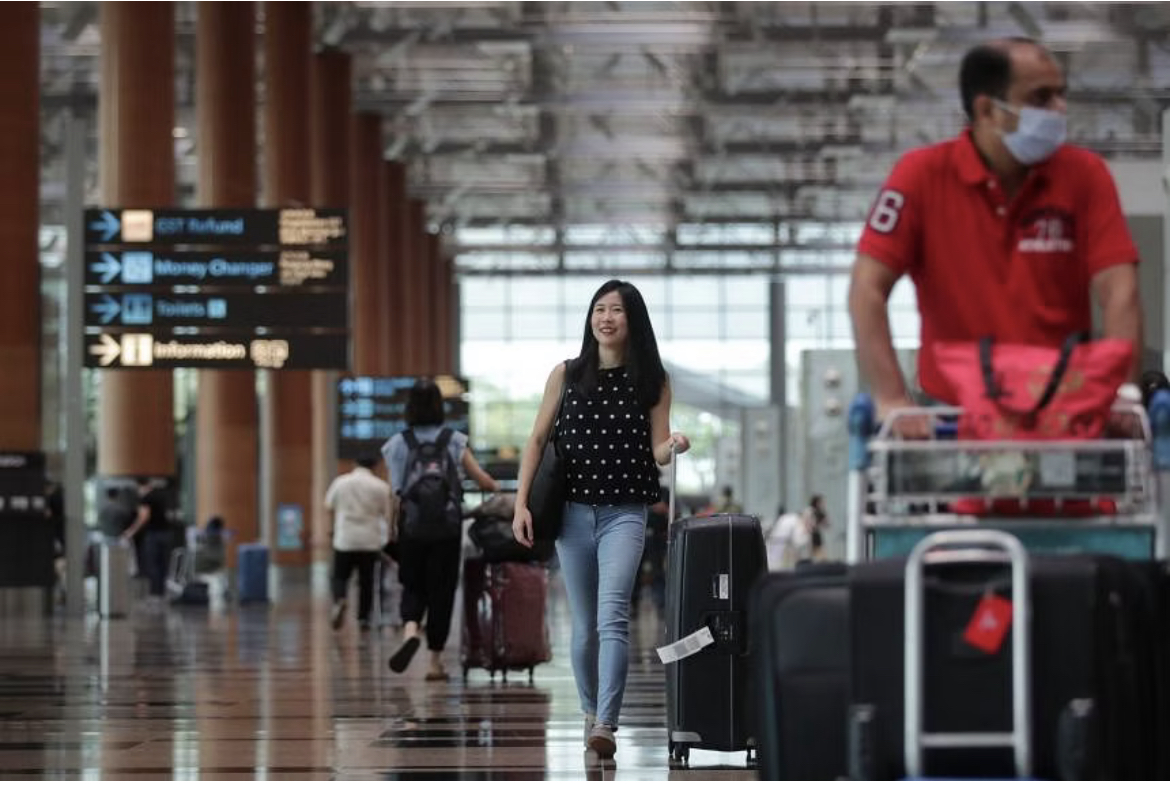In this piece
More than a dream job: Intersectional travel journalism and why it matters

Clara Lock, travel correspondent and assistant life editor for The Straits Times pictured above, believes it’s time to reimagine travel journalism. Photo credit: The Straits Times
In this piece
Intersectional travel journalism | What’s in it for newsrooms? | 1. Expand the genre. | 2.Commission locally. | 3. Stack stories. | 4. Entice and educate. | 5. Fact-check and verify claims. | ConclusionWhen I tell people I’m a travel journalist, it’s often met with envy: my beat has a reputation for being a “soft” and cushy one.
Perhaps people have this impression because the allure of travel is strong. Close to 10% of global GDP comes from the travel industry, and is likely to trend upwards in the coming years.
Yet travel is at an inflection point: demand now intersects with a growing consciousness of our carbon footprint, spurring some to stay home.
“It is a conflicting time to be involved in travel journalism because travelling for leisure is a luxury that will come increasingly under the microscope,” says Mark Footer, travel editor of the Hong Kong-based South China Morning Post (SCMP).
Flygskam, a Swedish word that means flight shame, caught on in 2018 – along with the sense that vacations, far from being an indicator of luxury, were something to be scorned.
Globally, 8-10% of CO2 emissions are caused by the travel and tourism sector. Figures like these might be easy to ignore; the tangible effects, less so. In 2023, climate change brought about wildfires in Maui and Greece, and heatwaves in Europe, North America and China.
Then there is the human cost. Overtourism, cultural erosion and the unthinking depletion of local supplies, such as jacuzzis and buffets in areas where food and water are scarce.
Even so, the travel industry has become too intertwined with the economy, employment and class to cease. If people are going to travel anyway, perhaps the value of travel journalism lies in harnessing that demand as a force for good.
Intersectional travel journalism
This is where intersectional travel journalism comes in: travel coverage that intersects with other newsworthy issues such as climate, community development, geopolitics and socio-cultural tensions.
Beyond top-10 listicles and magazine spreads that glorify the luxury experience, intersectionality allows both the complex and aspirational aspects of travel to exist on the same page.
It might highlight experiences where a tourist’s dollar benefits local people, offer alternatives to over-touristed cities, or simply help readers understand the socio-cultural backdrop of a place – so they behave sensitively when they’re there.
What’s in it for newsrooms?
Travel is a lucrative beat. In 2023, $280 million of Southeast Asia’s digital ad spend came from the travel industry. As the eighth largest out of 17 sectors, it topped industries such as financial services, real estate and energy and fuel when it came to ad spend.
Intersectional travel journalism creates new advertising opportunities for companies keen to plug their sustainability messages. For instance, Saudi Arabian developer Red Sea Global paired up with travel website Skift on a regenerative luxury campaign about new resorts with sustainability practices. Publications with a trusted track record of intersectional travel journalism are well positioned to host such campaigns.
Intersectional travel journalism also helps subscription-based publications differentiate themselves from free online content. Competition is fierce among influencers, digital publications and online travel agencies. But legacy titles retain the lion’s share of reader’s trust, and intersectional travel coverage can bolster that.
Such stories also attract the news-avoidant reader, who, as the Digital News Report 2023 points out, is drawn to positive features that offer utility.
If you’re an editor or journalist who’s convinced, here’s a five-step plan.
1. Expand the genre.
Broaden the parameters of travel writing to intersect with science, culture and economics, which would lend depth to a beat often dismissed by hardened news wonks as “fluff”.
“A good travel story is no different from, say, a science story. There are strong scenes, a nut graph, solid interviewees and data,” says Australia-based freelance writer Jessica Wynne Lockhart. Her stories weave themes such as science and conservation into travel, including a feature in the Smithsonian magazine on the commercialisation of bush tucker, or indigenous Australian food.
It is part foodie travelogue, part socio-cultural commentary on the appropriation of indigenous knowledge and resources.
Broadening the scope of travel journalism makes it more enticing and feasible for other sections of a publication to contribute, such as foreign correspondents, who are also destination experts.
2. Commission locally.
Commission local writers, who bring a cultural and historical understanding of a place, fresh ideas that might elude the visiting journalist, and depth and diversity to stories. Diverse voices are a way to portray a country accurately without exoticising it, says Sri-Lankan freelance writer Zinara Rathnayake. Her stories, such as a feature on jackfruit for BBC Travel, draw from her formative years and are devoid of the colonial lens.
On the flip side, there is value in the experienced globetrotting travel journalist whom editors can rely on. In that case, research, interviews, and a rigorous fact-checking process should underpin such reporting.
3. Stack stories.
Many publications rely heavily on hosted press trips for travel coverage, which means objectivity can be tricky – especially when hosts such as airlines and destination boards are also advertisers.
To get around this, produce multiple features from a single trip. Make the first story a “service-journalism” piece that will satisfy audiences and hosts, who may also be advertisers. This might be a destination guide or new property opening – quick to write, popular among readers, and lets brands put out their key messages.
This allows time for an intersectional story which might need more time to research and report. With this approach, publications appeal to all stakeholders. They fulfil commercial goals, while building trust among readers – which incentivises advertisers to associate with their brand.
4. Entice and educate.
Entice travel junkies with unique, curated experiences, and educate armchair travellers by exploring a destination through the lens of an issue.
What sets travel stories apart is their immersive nature, which captures a sense of place while curating how people can best spend their time and money.
Make regenerative tourism experiences, which aim to create a net positive impact, appealing for readers – such as immersive, non-performative interactions with New Zealand’s Maori community in a remote part of the country that has been uplifted by the tourist dollar.
Reframe sustainable tourism as a new, better take on luxury.
Chris Haslam, chief travel writer at British daily The Times, says: “Sustainability has always been sold as the vegetarian alternative to luxury travel, which is like chocolate cake. Why would you have the lentils when you can have the gateaux?”
Redefine sustainable travel as the new chocolate cake. Such as barefoot luxury resorts, which are properties that immerse the traveller in the natural environment while minimising their carbon footprint. Make it sustainable, but make it sexy.
And make readers feel erudite with travel coverage that surfaces unexpected things about the world. Such as this story on the LGBTQ revolution in Bhutan, a surprising take on a country better known for its monasteries and landscapes.
5. Fact-check and verify claims.
Before championing something as sustainable or regenerative, it is essential to establish whether this is really the case.
This can be tricky for a single journalist in unfamiliar terrain. Collaborate with climate journalists to evaluate the claims of companies. Ask direct questions, avoid brands that fudge the answers and spotlight those who do it right.
Journalists are positioned to set the agenda for good sustainability practices – the hope is that in time, companies will fall in line. None of this is foolproof, but it can help prevent false claims and greenwashing from making their way into a story.
Conclusion
Despite their value, deep-dive travel stories are likely to remain in the minority – about a third or less of travel stories, according to journalists and editors I spoke with.
Demand for service journalism remains strong, and intersectional travel journalism is resource intensive amid deadline pressure.
But it is essential work, even if the process of shifting attitudes can feel incremental. The goal is to shape consumer behaviour, creating a generation of responsible travellers, so the world we leave to future generations will remain one that is worth seeing.


